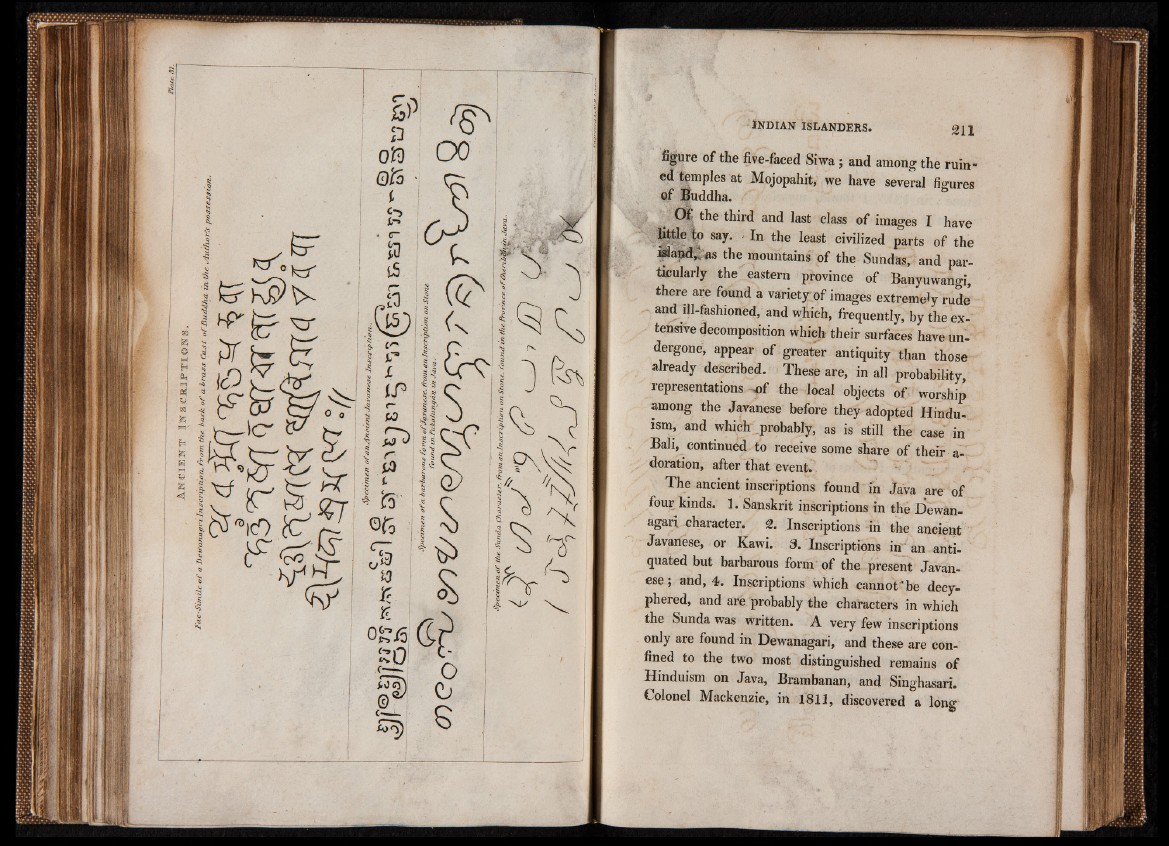
figure of the fi ve-faced Siwa ; and among the ruined
temples at Mojopahit, we have several figures
of Suddha.
the third and last class of images I have
Ip*- ^ ^east civilized parts of the
P P i ^ s the mountains of the Sundas, and particularly
the eastern province of Banyuwangi,
there are found a variety of images extremely rude
- and ill-fashioned, and which, frequently, by the extensive
decomposition which their surfaces have undergone,
appear of greater antiquity than those
already described. These are, in all probability,
representations -of the local objects of worship
among the Javanese before they adopted Hinduism,
and which probably, as is still the case in
Bali, continued to receive some share of their a-
doration, after that event.
The ancient inscriptions found in Java are of
four kinds. 1 . Sanskrit inscriptions in the Dewan-
agari character. 2. Inscriptions in the ancient
Javanese, or Kawi. 3. Inscriptions in an antiquated
but barbarous form of the present Javanese;
and, 4. Inscriptions which cannot'be decyphered,
and are probably the characters in which
the Sunda was written. A very few inscriptions
only are found in Dewanagari, and these are confined
to the two most distinguished remains of
Hinduism on Java, Brambanan, and Singhasari.
Colonel Mackenzie, in 1811, discovered a long©